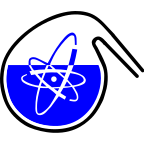Speaker
Description
Although thorium dioxide is considered as a replacement for UO$_2$ as a matrix for nuclear fuel, there are practical problems which must be resolved before deployment. These include the poor sinterability and the cost of manufacture. ThO$_2$ is the most stable binary oxide and thus requires higher temperatures than UO$_2$ to sinter to the required densities of ≥95%. The sintering temperatures can exceed the 1750 °C commonly achievable by commercial furnaces. In addition, the decay products of $^{232}$Th are shorter lived compared to $^{238}$U decay products and the activity of stocks can increase significantly during storage. Should these decay products such as the longer lived $^{228}$Ra remain in the liquid phase during powder production, waste disposal costs will rise significantly. If radium can be incorporated into the solid phase, these costs can be avoided.
Homogeneous precipitation using urea is a promising method for preparing ThO$_2$ for fuel applications, as it produces polycrystalline ThO$_2$ agglomerates, which readily form necks even at low temperatures [1]. This makes such ThO$_2$ an excellent candidate to counteract the poor sinterability inherent in ThO$_2$. Nonetheless, very little is known about the process. To correct this, the precipitation of Th from nitric acid solutions was followed over time as a function of the urea decomposition temperature and amount. [2]
Urea decomposes to form ammonia and carbonates, both of which are useful in the precipitation. Ammonia readily precipitates thorium, but leaves radium as highly soluble Ra(OH)$_2$. The carbonate produced by the urea process can serve to correct this, as RaCO$_3$ is very insoluble. The ammonia indeed caused >90% Th to pass into the solid phase at a pH above 4. These efficiencies increased over time to 99%. Despite supersaturation with CO$_2$ already occuring at low pH, the binding of Ra into the solid phase only begins to happen after Th precipitation is complete, above pH 7. Even after 24 h of heating, reaching pH 8.5, this process remains incomplete and only 80% of the radium is precipitated.
The produced precipitate is composed of nanometric, crystalline ThO$_2$, with adsorbed H$_2$O and CO$_2$. Prolonged heating causes the individual ThO$_2$ crystals to grow gradually. Unfortunately, the precipitate is very soft and readily forms a gel. This poorly affects the flowability of the powder and thus its potential industrial application.
[1] G.I. Nkou Bouala, N. Clavier, J. Lechelle, J. Monnier, C. Ricolleau, N. Dacheux, R. Podor, High-temperature electron microscopy study of ThO$_2$ microspheres sintering, Journal of the European Ceramic Society 37(2) (2017) 727-738.
[2] T. Wangle, V. Tyrpekl, T. Delloye, O. Larcher, J. Pakarinen, T. Cardinaels, J. Vleugels, M. Verwerft, Homogeneous hydrolysis of thorium by thermal decomposition of urea, Radiochimica Acta, in press

